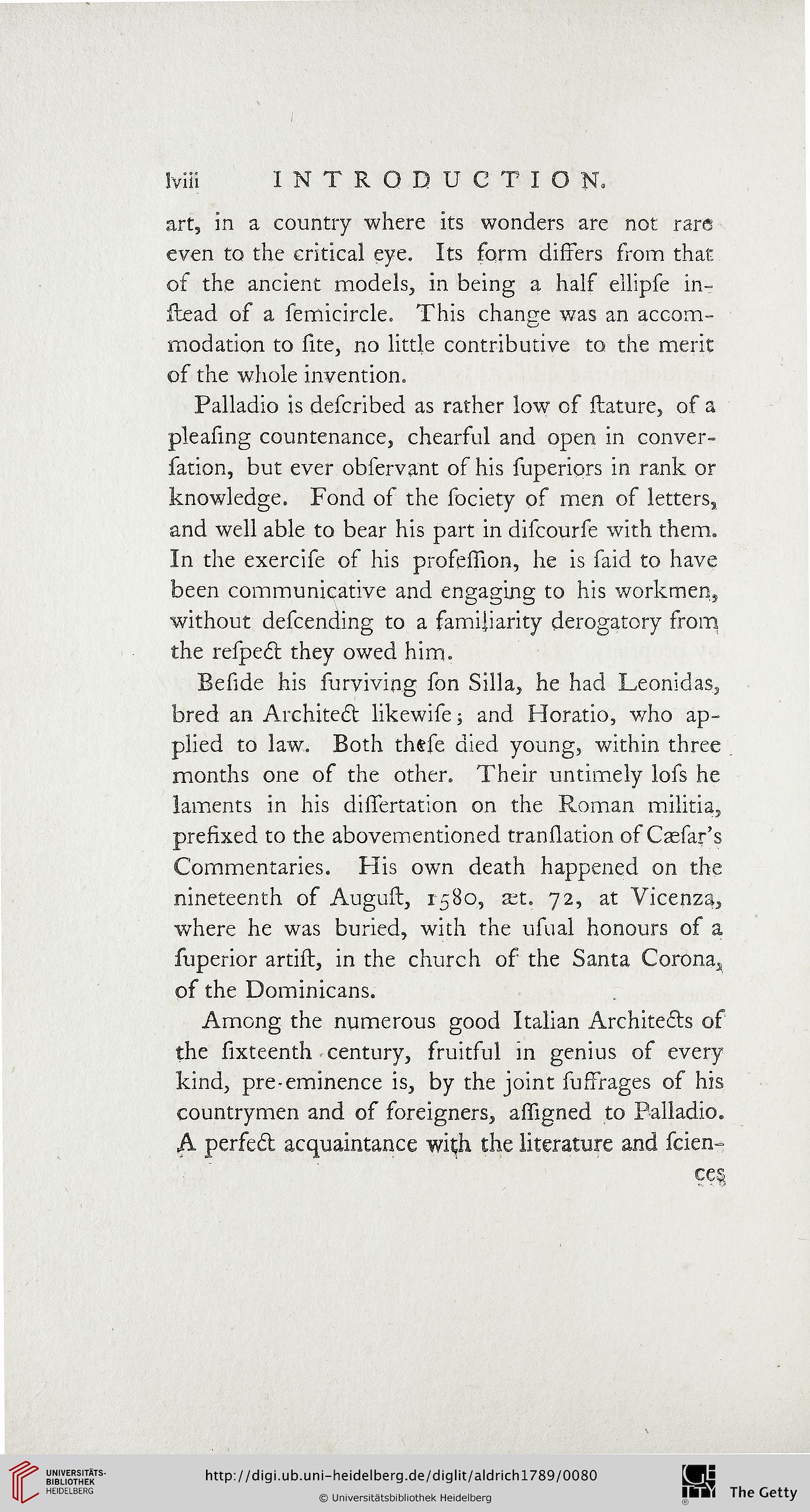Jvlii INTRODUCTION.
art, in a country where its wonders are not rare
even to the critical eye. Its form differs from that
os the ancient models, in being a hals ellipse in-
sbead of a semicircle. This change was an accom-
modation to site, no little contributive to the merit
os the whole invention.
Palladio is described as rather low of stature, of a
pleasing countenance, chearful and open in conver-
sation, but ever obiervant of his superiors in rank or
knowledge. Fond of the society of men of letters,
and well able to bear his part in discourse with them.
In the exercise of his profession, he is said to have
been communicative and engaging to his workmen,
without descending to a familiarity derogatory from
the resped they owed him.
Beside his surviving son Silla, he had Leonidas,
bred an Architect likewise; and Horatio, who ap-
plied to law. Both these died young, within three
months one of the other. Their untimely loss he
laments in his dissertation on the Roman militia,
prefixed to the abovementioned translation of Caesar’s
Commentaries. His own death happened on the
nineteenth of August, 1580, a;t. 72, at Vicenza,
where he was buried, with the usual honours of a
superior artist, in the church of the Santa Corona,
of the Dominicans.
Among the numerous good Italian Architects of
the sixteenth century, fruitful in genius of every
kind, pre-eminence is, by the joint suffrages of his
countrymen and of foreigners, assigned to Palladio.
A perfed acquaintance with the literature and scien-
ce§
art, in a country where its wonders are not rare
even to the critical eye. Its form differs from that
os the ancient models, in being a hals ellipse in-
sbead of a semicircle. This change was an accom-
modation to site, no little contributive to the merit
os the whole invention.
Palladio is described as rather low of stature, of a
pleasing countenance, chearful and open in conver-
sation, but ever obiervant of his superiors in rank or
knowledge. Fond of the society of men of letters,
and well able to bear his part in discourse with them.
In the exercise of his profession, he is said to have
been communicative and engaging to his workmen,
without descending to a familiarity derogatory from
the resped they owed him.
Beside his surviving son Silla, he had Leonidas,
bred an Architect likewise; and Horatio, who ap-
plied to law. Both these died young, within three
months one of the other. Their untimely loss he
laments in his dissertation on the Roman militia,
prefixed to the abovementioned translation of Caesar’s
Commentaries. His own death happened on the
nineteenth of August, 1580, a;t. 72, at Vicenza,
where he was buried, with the usual honours of a
superior artist, in the church of the Santa Corona,
of the Dominicans.
Among the numerous good Italian Architects of
the sixteenth century, fruitful in genius of every
kind, pre-eminence is, by the joint suffrages of his
countrymen and of foreigners, assigned to Palladio.
A perfed acquaintance with the literature and scien-
ce§




